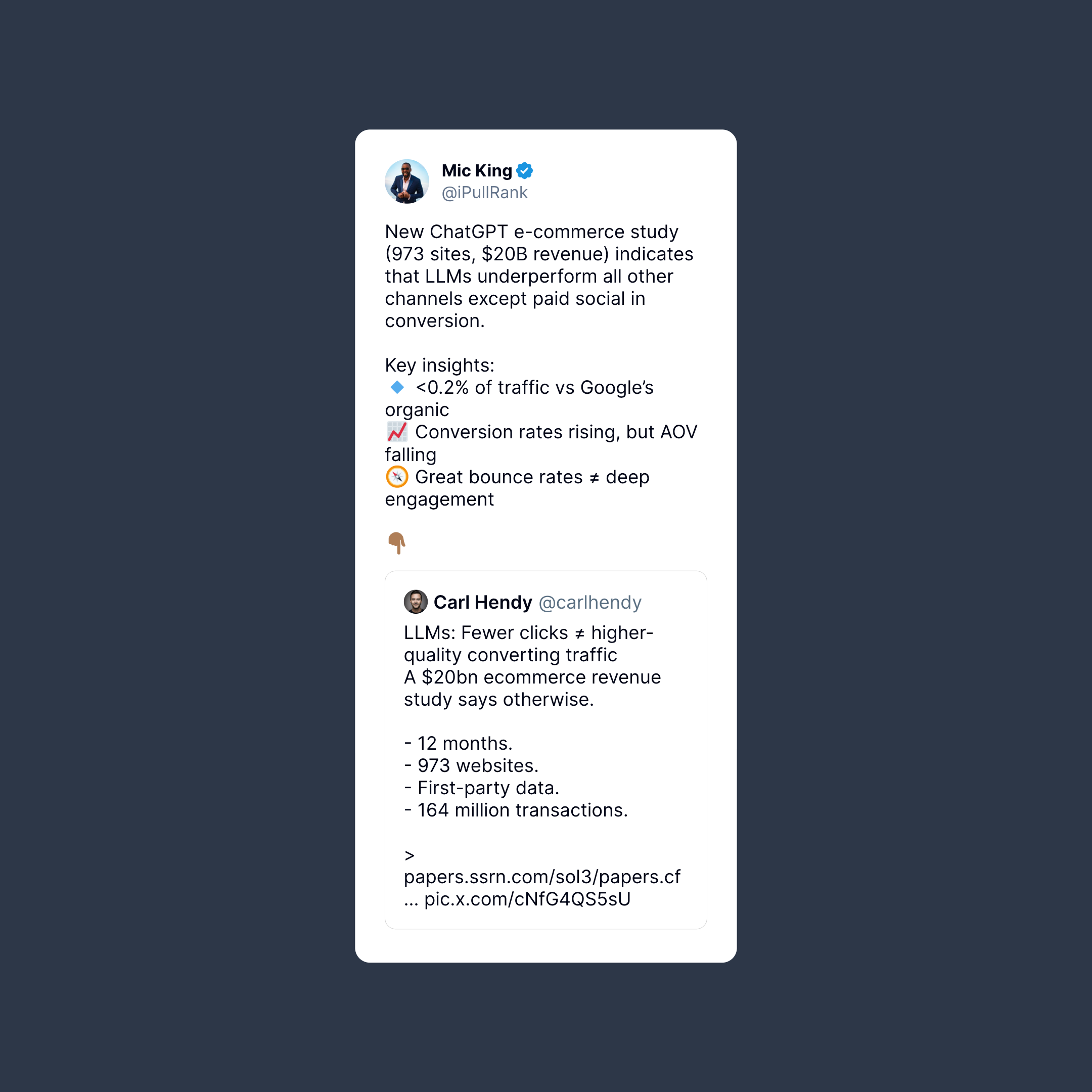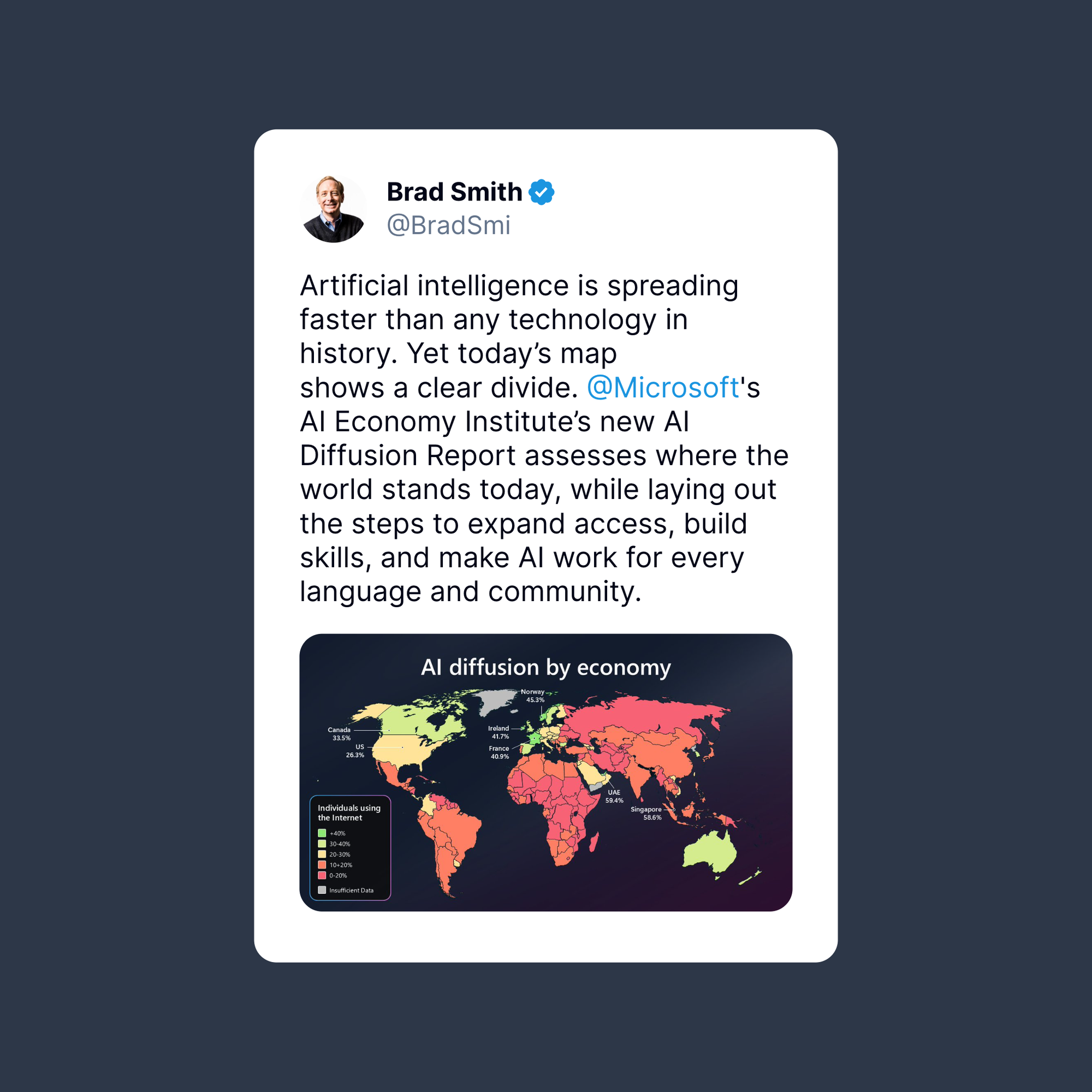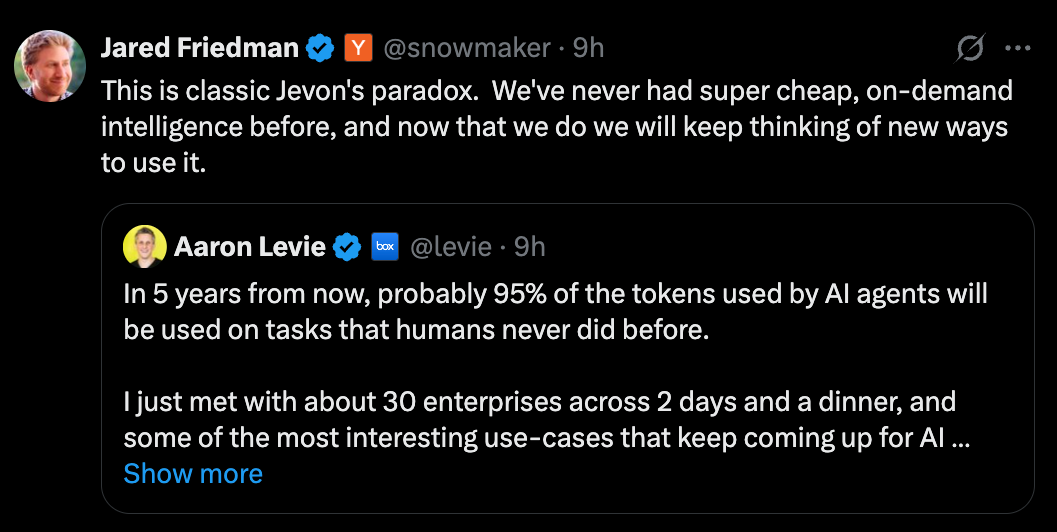Here are the highlights from the week that was in AI and our spicy takes on what it actually means. 🌶️
This week, we’re zooming out to see how AI is reshaping work—from global adoption gaps to how businesses are using agents to tackle problems humans never could before.
We look at what Jeff Bezos calls the “industrial bubble” of AI, explore new thinking on how to evaluate agents, and see what happens when automation makes intelligence on-demand.
Plus, a couple of throwbacks worth revisiting:
👉 Learn how to bring live data straight into your AI workflows with Chipp + Zapier + Google Sheets
👉 See how our Gold Partners at Purpose Driven AI help teams co-build solutions that actually stick.
AI Highlights from Around the Web
ChatGPT's E-commerce Performance: The Data is In
Mic King shares a major e-commerce study analyzing 973 sites with $20B in revenue. The verdict? LLMs underperform all other channels except paid social in conversion.

🌶️ Behaviors are changing. I imagine conversion will soon be much higher in LLMs...but it's not there yet. Watch this space as we see how shopping behaviors change.
The Global AI Divide is Real
Brad Smith from Microsoft highlights a striking reality. AI is spreading faster than any technology in history, yet there's a clear divide in who's actually using it. Microsoft's AI Economy Institute's new AI Diffusion Report maps out where the world stands today and shows the steps needed to expand access, build skills, and make AI work for every language and community.

🌶️ Access is different than adoption. We are seeing a technical divide due to adoption. The problem to solve is training, onboarding, and removing fear so people use the super intelligence waiting for their them. Agency is the new differentiator.
Agent Evals Need to Focus on Function Calls
Aaron Levie breaks down why agent evaluations need a complete rethink. Instead of judging agents by their answers, we should evaluate them by their function calls and decision-making. It's not about prose quality, it's about whether the agent knows when to escalate, when to fetch data, and when to admit it needs help

🌶️ AI face the paradox of choice too! When AI can get information anywhere, it needs to get great at accessing the right information...just like humans! Think of building evals or improving this step for better AI agents.
Jeff Bezos on the ‘AI Bubble’
At Italian Tech Week 2025, Jeff Bezos embraced the hype—calling it an industrial bubble, not a financial one. “AI is real, and it’s going to transform every single industry,” he said. Sometimes, the so-called bubble is exactly what builds the future faster.

🌶️ Both Bezos and Ben Thompson spoke of the importance of bubbles that create lasting value (think railroads, fiber for the internet, etc.) versus transiant value (think tulips or GPUs which go out of date quickly). For a truly transformational bubble, we need to build power - which will help us for generations no matter what we build.
Jevon’s Paradox and the Age of Cheap Intelligence
Jared Friedman and Aaron Levie remind us that when intelligence gets cheaper, we use more of it. Levie predicts that 95% of AI tokens in five years will go to tasks humans never did before, unlocking whole new categories of work that once seemed impossible.

🌶️ We see the same thing at Chipp. When we have better AI tools, people want to use it more. As prices drop, people use AI more. Finding new problems that we never considered will be a big area of opportunity for businesses.
Chipp Updates
Supercharge Chipp With Live Data: Bring Dynamic Info From Anywhere Into Your AI Agent

What if your Chipp AI could do more than just chat—it could act on live data? With Chipp, Zapier, and Google Sheets, you can automate signups, log leads, manage projects, and sync info across your workflows. This tutorial shows you how to make your AI assistant a true business teammate.
Check the full article.
How Sprint-Driven, Co-Built AI Unlocks Real Results

Our Gold Partners at Purpose Driven AI are showing how co-building beats complexity. Through rapid AI sprints, they help teams design, test, and deploy real solutions—together. It’s a no-nonsense, purpose-first way to make AI adoption natural and effective.
Check the full article..




